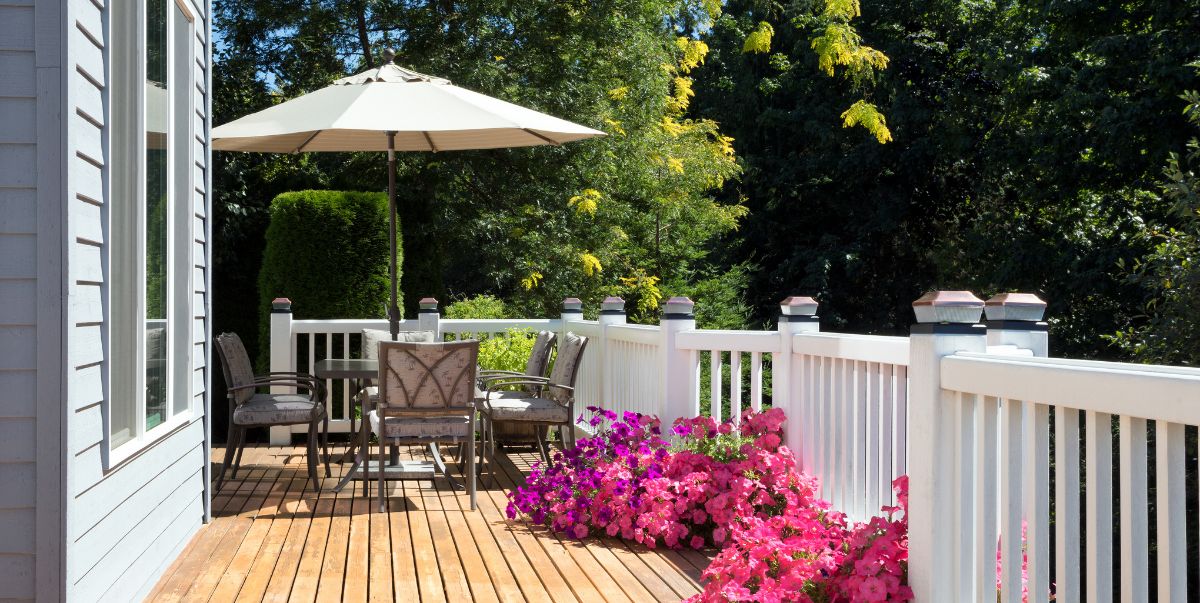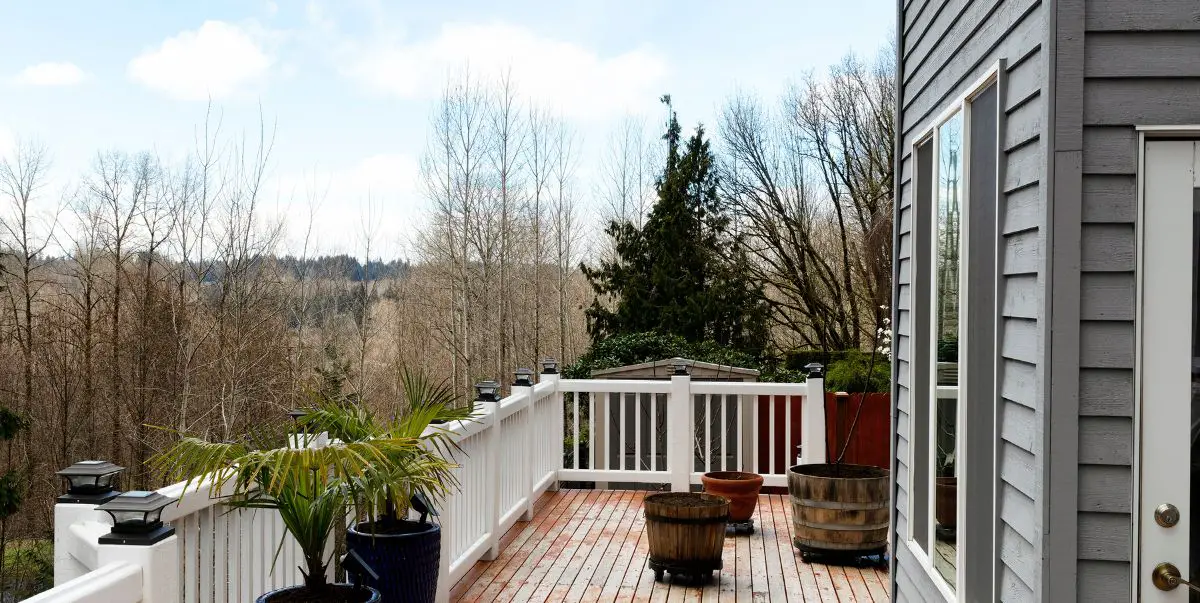Yes, you can stain cedar-tone wood. Staining cedar-tone wood gives it a fresh look while preserving its natural beauty.
Adding a stain to cedar-tone wood not only enhances its appearance but also helps to protect it from the elements such as sun, rain, and pests. Whether you are looking to darken the wood or bring out its natural color, staining cedar-tone wood is a great way to achieve the desired look.
We will explore the process of staining cedar tonewood, including the preparation steps and the different staining options available. So, if you are ready to give your cedar-tone wood a makeover, keep reading to learn more.
Preparing Cedar-Tone Wood For Staining
Before staining your cedar-tone wood, it is essential to properly prepare the surface to ensure the stain adheres well and lasts longer. Preparing cedar-tone wood for staining involves a few essential steps, including cleaning the surface and sanding the wood. By following these steps, you can achieve a beautifully stained cedar-tone wood that enhances the overall look of your project.
Cleaning The Surface
Before you begin staining your cedar-tone wood, you need to clean the surface to remove any dirt, dust, or debris that may inhibit proper stain adhesion. Cleaning the surface is crucial to achieving a smooth and uniform stain finish.
Here’s how you can effectively clean the cedar tonewood surface:
- Start by removing loose dirt and debris using a soft-bristle brush or a broom.
- For more stubborn dirt and stains, you can use a mixture of mild detergent and water. Apply the mixture to the surface and scrub gently using a soft cloth or sponge.
- Rinse the surface thoroughly with clean water to remove any soap residue.
- Allow the wood to dry completely before moving on to the next step.
Sanding The Wood
Sanding the cedar-tone wood is an important step to ensure a smooth and even surface for staining. Sanding helps remove any rough patches, blemishes, or imperfections, allowing the stain to penetrate the wood evenly.
Follow these steps to sand the cedar tone wood:
- Start by selecting the appropriate grit sandpaper. For initial sanding, a medium 80-120 grit sandpaper is recommended. For finer sanding, switch to a higher grit sandpaper such as 150-220 grit.
- Using a sanding block or an orbital sander, sand the wood along the grain. Apply even pressure and maintain a consistent motion to avoid uneven sanding.
- Continue sanding the wood until you achieve a smooth and even surface free from any visible blemishes.
- Take the time to inspect the wood surface and make any necessary touch-ups by sanding those specific areas.
- Once you’ve finished sanding, remove any sanding dust using a clean cloth or a vacuum cleaner.
By thoroughly cleaning the surface and sanding the cedar tonewood, you are now ready to apply the stain. Following these preparation steps will ensure a professional-looking finish and enhance the natural beauty of the wood. Now that you have prepared your cedar-tone wood, it’s time to move on to the next step – applying the stain.

Choosing The Right Stain For Cedar-Tone Wood
When it comes to protecting and enhancing the natural beauty of cedar-tone wood, choosing the right stain is essential. A well-selected stain can not only add depth and richness to the wood’s color but also provide long-lasting protection against the elements. In this article, we will explore the different types of stains available and their effects on cedar-tone wood.
Understanding Different Types Of Stains
Before diving into the various types of stains, it’s important to note that cedar tone wood has its unique characteristics that can affect the stain’s appearance and performance. With that said, here are three common types of stains to consider:
- Semi-transparent stains: These stains allow the natural beauty of the wood grain to show through while providing color and protection. They are an excellent choice for showcasing the cedar tone wood’s natural variations.
- Solid stains: If you prefer a more uniform color without compromising the texture of the wood, solid stains are a great option. They provide excellent coverage and long-lasting protection against UV rays and moisture.
- Clear stains: Ideal for those who want to preserve the cedar tone wood’s natural appearance while adding a protective layer against the elements. Clear stains are barely visible and offer minimal color enhancement.
Considering The Effects On Cedar-Tone Wood
When selecting a stain for cedar-tone wood, it’s essential to consider how it will affect the appearance and longevity of the wood. Here are a few factors to keep in mind:
- Color enhancement: Different stains can alter the color of cedar-tone wood. Some stains may darken the wood, while others may add a subtle hue. Consider how the stain’s color will complement your desired aesthetic.
- Protection against UV rays: Cedar-tone wood is susceptible to sun damage. Look for stains that offer UV protection to prevent the wood from fading or turning gray over time.
- Maintenance: Some stains require more frequent reapplication than others. Consider whether you are willing to invest time and effort in maintaining the appearance of the cedar-tone wood.
In conclusion, choosing the right stain for cedar-tone wood involves understanding the different types of stains available and considering their effects on the wood’s appearance and longevity. By selecting a stain that enhances the wood’s natural beauty and provides adequate protection, you can ensure that your cedar-tone wood will stand the test of time.
Applying Stain To Cedar-Tone Wood
When it comes to applying stain to cedar tone wood, it’s essential to use the right tools and techniques for an even and professional finish. Whether you’re working on a small DIY project or a larger outdoor structure, the right approach can make all the difference in the final result.
Tools And Materials Needed
Before you start the staining process, gather the necessary tools and materials for the job. Here’s what you’ll need:
- Cedar tone wood stain
- Paintbrush or paint sprayer
- Sandpaper
- Drop cloths or plastic sheeting
- Stir stick or paint mixer
- Gloves
- Protective eyewear
- Clean rags
- Paint tray or bucket
Techniques For Even Application
To achieve a uniform and attractive finish, follow these techniques for applying stain to cedar tone wood:
- Prepare the Surface: Begin by sanding the cedar wood to create a smooth and clean surface for the stain to adhere to. Remove any dust or debris with a clean cloth.
- Coat Evenly: Use a paintbrush or sprayer to apply the stain in smooth, even strokes. Work in small sections to ensure thorough coverage.
- Allow Drying Time: After each coat, allow the stain to dry according to the manufacturer’s instructions. Depending on the weather conditions, this may take a few hours to a day.
- Repeat as Needed: For a deeper or darker tone, apply additional coats of stain, allowing proper drying time between each application. Be mindful of over-application to prevent blotching.
- Protect the Surface: Once the staining is complete, protect the wood with a clear sealant to preserve the finish and enhance durability against the elements.
Protecting And Maintaining Stained Cedar-Tone Wood
Once your beautiful cedar-tone wood has been stained, it is crucial to take the necessary steps to protect and maintain its appearance for years to come. By applying a topcoat and regularly performing maintenance, you can ensure that your stained cedar-tone wood retains its natural beauty and durability. In this article, we will explore the importance of applying a topcoat and the simple regular maintenance tasks you can undertake to keep your stained cedar-tone wood looking its best.
Applying A Topcoat
To maximize the longevity of your stained cedar tonewood, it is recommended to apply a topcoat after staining. This extra layer of protection acts as a shield against UV rays, moisture, and other elements that can potentially damage the wood. When applying a topcoat, consider the following:
- Choosing the right topcoat: Select a high-quality topcoat designed specifically for exterior use and suitable for cedar-tone wood. Look for features such as UV protection and waterproofing properties.
- Prepare the wood: Before applying the topcoat, ensure the stained cedar-tone wood is clean, dry, and free from any dust or debris. Sanding the surface lightly can help create a smooth and even finish.
- Application technique: Follow the manufacturer’s instructions carefully for the best results. Use a brush, roller, or sprayer to evenly coat the wood, working in the direction of the wood grain.
- Drying time and multiple coats: Allow sufficient drying time between each coat as recommended by the manufacturer. Depending on the product, multiple coats may be required to achieve the desired level of protection.
Regular Maintenance
Performing regular maintenance is essential to preserve the look and condition of your stained cedar-tone wood. By following these simple tasks, you can maintain its beauty and extend its lifespan:
- Cleaning: Regularly clean the surface of your stained cedar tone wood using a mild soap and water solution. Gently scrub the wood with a soft brush or cloth, taking care not to damage the stain. Rinse thoroughly and allow it to dry completely.
- Inspecting for damage: Periodically inspect your stained cedar-tone wood for signs of damage such as cracks, splits, or peeling. Address any issues promptly to prevent further deterioration.
- Reapplication of topcoat: Over time, the protective topcoat may wear off due to exposure to the elements. When you notice that water is no longer beading up on the surface, it’s time to reapply the topcoat to ensure continued protection.
- Regular sealing: Depending on the condition of the stained cedar tone wood, it may be necessary to reseal the wood periodically. This extra layer of protection can help prevent moisture infiltration and maintain the integrity of the stain.
By following these simple steps for applying a topcoat and regular maintenance, you can enjoy the beauty of your stained cedar tonewood for many years to come.
Enhancing The Look Of Stained Cedar-Tone Wood
If you want to give your stained cedar-tone wood an extra touch of beauty, there are various ways you can enhance its look. By adding decorative elements and incorporating complementary features, you can transform your cedar-tone wood into a stunning focal point for your outdoor space. In this article, we will explore these options in more detail.
Adding Decorative Elements
Decorative elements can elevate the appearance of stained cedar-tone wood, adding charm and visual interest. Here are a few ideas to consider:
- 1. Outdoor Lighting: By strategically placing outdoor lighting fixtures around your stained cedar-tone wood, you can create a warm and inviting ambiance. Consider using solar-powered or LED lights to highlight the wood’s natural beauty.
- 2. Potted Plants: Adding potted plants or colorful flowers near your cedar tone wood can bring life and vibrancy to the space. The greenery acts as a natural complement to the wood’s warm tone.
- 3. Decorative Accents: Incorporating decorative accents such as outdoor wall art, lanterns, or sculptures can further enhance the look of your stained cedar-tone wood. These small details can add personality and style to your outdoor area.
Incorporating Complementary Features
To create a cohesive and harmonious outdoor space, it’s important to incorporate features that complement the stained cedar tone wood. Here are some complementary elements to consider:
- 1. Natural Stone: Pairing your stained cedar tone wood with natural stone elements, such as a stone pathway or patio, creates a visually pleasing contrast. The combination of wood and stone adds depth and texture to the overall design.
- 2. Water Features: Adding a water feature, such as a fountain or pond, near your stained cedar-tone wood can create a tranquil atmosphere. The sound of flowing water combined with the wood’s organic beauty creates a relaxing and serene environment.
- 3. Outdoor Furniture: Choosing outdoor furniture that complements your stained cedar tone wood is essential. Opt for pieces made from materials like wrought iron or wicker, as they provide a stylish contrast to the wood’s natural warmth.
By incorporating these decorative elements and complementary features, you can enhance the look of your stained cedar-tone wood, transforming it into a visually stunning outdoor space. Experiment with different combinations to find a design that suits your personal taste and complements your existing decor.

Frequently Asked Questions Of Can You Stain Cedar Tone Wood
What Is The Difference Between Cedar And Cedar-Tone Wood?
Cedar wood is natural, while cedar-tone wood is chemically treated to resemble cedar. Cedar retains its natural scent and properties, while cedar-tone wood is artificially created. Both are used for outdoor projects but differ in appearance and longevity.
Does Cedar Tone Treated Lumber Need To Be Sealed?
Cedar tone treated lumber does not require sealing. The treatment process protects the wood from water and insect damage, making it resistant to rot and decay. However, if you want to maintain the appearance of the wood, you can apply a sealer or stain.
How Long Does Cedar Tone Wood Keep Its Color?
Cedar tone wood retains its color for a long time due to its natural properties. It can maintain its appearance for several years with proper care and maintenance.
What Color Is Cedar Tone?
The color of the cedar tone is a warm, earthy, reddish-brown hue that resembles natural cedar wood. It is a popular choice for exterior wood stains and offers a timeless, rustic look for outdoor projects.
Conclusion
Staining cedar tone wood can enhance its natural beauty while also providing protection against the elements. By following the proper techniques and choosing the right stain, you can achieve a beautiful and long-lasting finish. Whether you prefer a transparent or solid stain, cedar-tone wood can be effectively stained to suit your aesthetic and functional needs.


